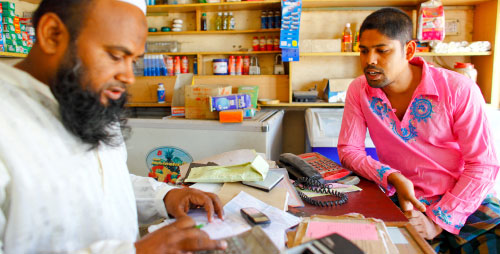Mobile Money has not caught on everywhere, and it needs the
right nurturing to work, but where it has taken off it has made a huge impact in
the following countries:
Countries with high % of GDP in Mobile
Money Systems
Country
|
% of
GDP in Mobile Money Systems
|
Kenya
|
>60%
|
Tanzania
|
>30%
|
Uganda
|
>20%
|
Côte d’Ivoire, Madagascar, Paraguay, Rwanda, Tonga, and
Zimbabwe
|
2% to 5%
|
Source: GSMA
A recent
GSMA report, http://www.gsma.com/mobilefordevelopment/wp-content/uploads/2013/02/MMU_State_of_industry.pdf highlights this and shows how operators and third parties have been successful
in developing mobile money systems.
To add more
emphatic details as to the importance of mobile money, in Kenya, Madagascar,
Tanzania, and Uganda, the total number of registered mobile
money accounts in June 2012 was higher than the number of commercial bank
accounts estimated by the IMF in their 2011 Financial Access Survey.

The question
has always been can this type of service work in developed countries and the
mobile money success in developing countries offers some clues.
- The majority of mobile money players are carriers
- It is a business which is:
- Very Op-Ex oriented
- Needs to be a separate business outside of main telecom business
- Needs blessing and support of the CEO
- Requires a large number of agents and to have strict control of this distribution network
- Works best when focused on one or two service at introduction
- Requires getting people from registration to activation quickly
- A human capital intensive business
- Not dependent on current market share or competition
- Not a sure bet, some do well and some do not
- Benefits to consumer can vary by region (Savings, Bill Payment, etc.) (It is important to key into the local market needs)
- There has to be a clear need by the consumer for this service and laser focus by the company to satisfy this need.
- Making electronic payments as accepted as cash but with the ability to transmit to anyone.
- Storing all important financial information in one place as mobile wallets are trying to do today
- Having a place that records all of your transaction and helps a person save money.
